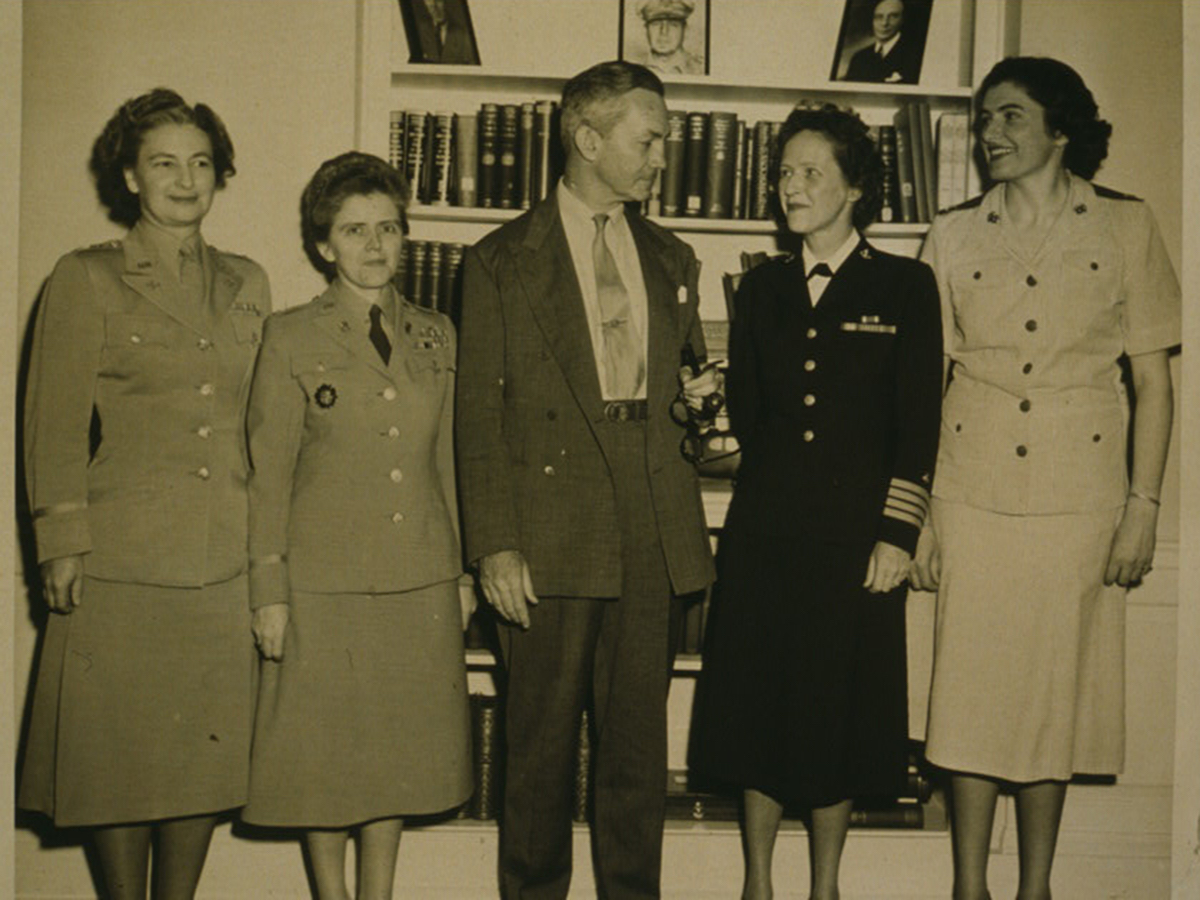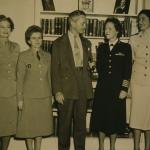
Secretary of Defense James Forrestal (center) congratulates (L to R) Colonel Geraldine May, Colonel Mary A. Hallaren, Captain Joy Bright Hancock, and Major Julia E. Hamblet, after the passage of the Women's Armed Services Integration Act, the Pentagon, Washington, D.C.," Photograph, 1948, Library of Congress.
To Serve Their Country
During World War II, nearly 400,000 American women served in women’s service branches, both at home and abroad. They volunteered for the newly-formed Women’s Army Auxiliary Corps (WAACs, later renamed the Women’s Army Corps), the Navy Women’s Reserve (WAVES), the Marine Corps Women’s Reserve, the Coast Guard Women’s Reserve (SPARS), the Women Airforce Service Pilots (WASPS), the Army Nurses Corps, and the Navy Nurse Corps. Women in uniform took office and clerical jobs in the armed forces in order to free men to fight. They also drove trucks, repaired airplanes, worked as laboratory technicians, rigged parachutes, served as radio operators, analyzed photographs, flew military aircraft across the country, test-flew newly repaired planes, and even trained anti-aircraft artillery gunners by acting as flying targets. After the war, however, women veterans encountered roadblocks when they tried to take advantage of benefit programs for veterans, such as the GI Bill, which granted white male veterans access to funds for college educations, home mortgages, among other advantages. In 1948, the Women’s Armed Services Integration Act allowed all women to serve as permanent, regular members of the Armed Forces.
